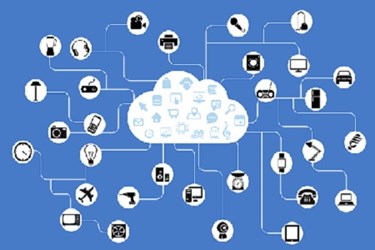Is The Internet Of Things The Food Safety Solution Of The Future?
By Isaac Fletcher, contributing writer, Food Online

With the ability to enable enhanced monitoring across the supply chain and provide detailed documentation in real-time, the Internet of Things could be a solution for improving food safety and traceability in the not-so-distant future.
Within the food industry, there is a continuous effort on the part of manufacturers, processors, and suppliers to enhance food safety using the most efficient and effective methods. The rapid advancement of technology and connectivity is proving to be a critical element in elevating food safety within the realms of processing and manufacturing. In the near future, the Internet of Things (IoT) will likely play a pivotal role in reducing safety issues that put consumers and companies at risk.
Related: What kind of impact does a recall have on a food maker?
Throughout the supply chain and production process, there are numerous potential points of entry for bacteria, mold, insects, and other foreign bodies. Food safety issues can arise from improper storage temperatures and environments, failure to properly sanitize equipment between batches, or worker errors. In order to combat against the seemingly endless number of potential risks, manufacturers should perform risk analysis at each point of the supply chain, determine what forms of contamination are most likely, and develop a solution to guard against those contaminants.
Recent years have shown that the threat of microorganisms and mycotoxins is increasing, and manufacturers need to find ways to stay ahead of these threats. Additionally, with the prevalence of various food allergens, particularly in Western regions, proper inter-batch cleaning and sanitation has become increasingly important. One of the best ways to ensure production systems are functioning at optimum safety levels is the implementation of real-time monitoring.
By connecting sensors and other monitoring systems into a functional network, it will be possible for manufacturers to easily monitor the storage conditions of various raw materials to ensure that factors such as temperature and humidity are at their proper levels. Additionally, the same network functionality can be used to monitor complex production processes in real time, allowing for adjustments to be made as needed, as opposed to analyzing data post-production when it is too late to save a spoiled batch. This notion of prevention of food safety events rather than reaction to them is the fundamental idea of FSMA.
Although innovation and technological advancement are making great strides toward safer food, there may still be instances where a recall is necessary. In the event of a recall, traceability is critical, and technologies like the IoT can provide important documentation for tracking and tracing purposes. There is no single solution for food safety, but by ensuring that all pieces within a supply chain are properly optimized with regard to safety, tracking, and traceability, the risk of dangerous food reaching consumers is significantly reduced.
